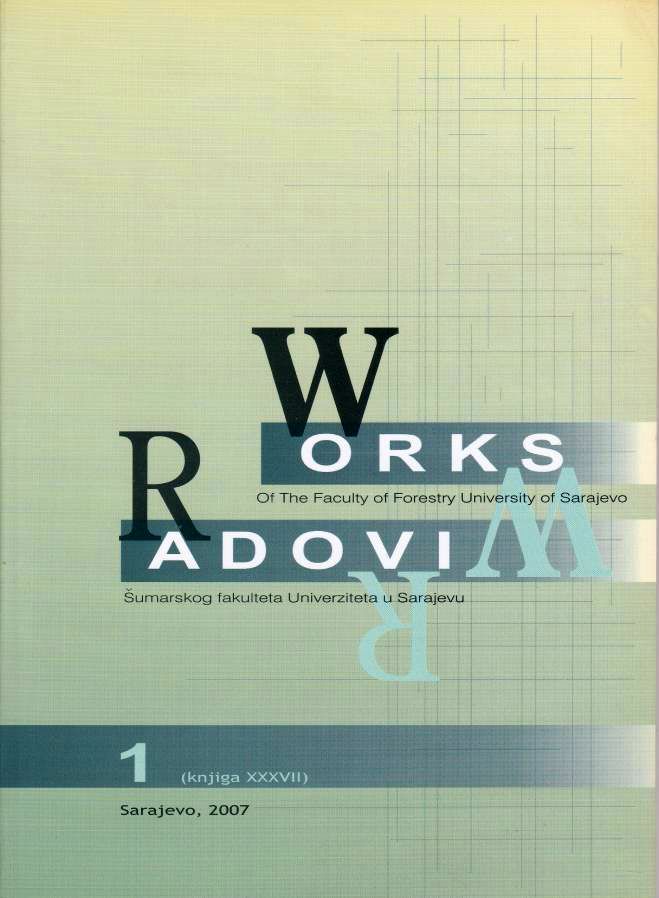Choice of the Bridge Construction Type and its Influence to the Regulation of Flood Flows
DOI:
https://doi.org/10.54652/rsf.2007.v37.i1.185Keywords:
Forest road, bridge, composite structures, simple structural systems, reconstruction, flood flowAbstract
UDK 630*38:624.2/.8
624.2/.8:556.16
Bridges represent the most significant objects on forest roads, both based on the costs of their construction and their technical characteristics. The construction of new and reconstruction of the existing bridges for forest trucks is solicited as a continued task ahead of forest professionals.
The paper is intended to point at the significance of the choice of the type of bridge construction during the reconstruction of the existing or construction of the new bridges, as well as the influence of the choice of the type of construction to flood flows which are in most cases bridged over by such construction structures.
The performed investigation indicated that during the construction of the bridges, various kinds of materials can be used with technical characteristics that mutually differ. Leastways, it has a direct influence to the type of the bridge construction material. The study also indicated that previous reconstructions were done in such a manner that they did not solve the problem of bridging over in the long run. The reconstructions were mainly done with raw conifer material which was not impregnated, reducing the durability of such structures to a period spaning from 5 to 10 years.
In the usual practice, for over bridging water flows, we often apply solutions in the form of tubes of different profiles that are placed in one or more rows. Such solutions are not convenient as the tubes get stuck with first flood flow currents. By a thorough analysis of durability of different types of bridge constructions, technical solutions, as well as safety of the bridges during the passage of flood flow it can be reported that rather reliable solutions for spans of 4,0 – 6,0 are AB bridges, while for the spans ranging between 6,0 and 10,0 m we would opt for composite constructions (steel – concrete) as best quality solution. Naturally, other types of bridge constructions should not be neglected in reconstruction and construction of bridges, however, each separate case requires separate analysis and the results of such analyses will determine the most appropriate type of spanning construction whether it is the question of technical/technological or economical construction component.
Downloads
References
EŠKERICA, V.: Uporedna analiza primjenjivosti drvenih, čeličnih i armirano betonskih mostova prostih sistema na šumskim putevima. Magistarski rad. Sarajevo, 1974.
HORVATIĆ, D.: Spregnute konstrukcije čelik-beton, Masmedia Zagreb, 2003.
JAHIĆ, M.: Uređivanje bujica, Šumarski fakultet Sarajevo, 2006. godina
KOVAČEVIĆ, B.: Racionalizacija gradnje mostova na šumskim putevima primjenom suvremenih rasponskih konstrukcija. Magistarski rad. Šumarski fakultet. Sarajevo, 2005.
PRŽULJ, M.: Spregnute konstrukcije: Teoretske osnove, proračun i konstruisanje sprezanja čelika i betona kod nosača, ploča i stubova sa primjenom u mostogradnji i visokogradnji , IRO “Građevinska knjiga” Beograd, 1989.






















